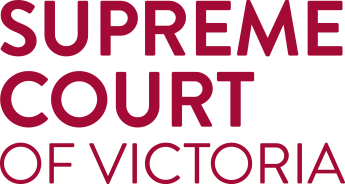The Supreme Court (General Civil Procedure) Rules 2025 commence on 8 September 2025.
The new Rules were made by the Council of Judges on 28 August 2025.
The Rules remain largely unchanged from the 2015 Rules and retain the same structure. The explanatory memorandum for the Rules highlights where changes have been made.
There are some changes that will require practitioners to update the format of precedents. A grace period will apply and Registry will not be seeking strict compliance with formatting changes from 8 September.
The Court will progressively update forms and documents available on the website in coming months to reflect the changes and encourages practitioners to do the same with the precedents they use. The Court will also progressively update practice notes and other information with reference to the Rules. In the meantime, references to a rule in the Supreme Court (General Civil Procedure) Rules 2015 should be read as a reference to the equivalent 2025 rule.
The overarching purpose of the Rules is to facilitate the just, efficient, timely and cost-effective resolution of the real issues in dispute.
Some of the significant changes in the amending Rules are:
- Current Order 28 and 28A are consolidated and adapted to form new Order 28 entitled “Filing, sealing and inspection of documents”.
New Order 28 consists of 2 Parts:
Part 1 is entitled “Filing”, and it applies to all filing. The mode of filing is prescribed by Rule 28.02:
(1) A document is to be submitted for filing by an authorised person in RedCrest in a pdf version or any other form approved by the Prothonotary (Trial Division) or the Registrar (Court of Appeal); (2) in the Trial Division a document may be filed in any other manner that the Court or the Prothonotary considers appropriate; (3) in relation to the Court of Appeal, the Court of Appeal constituted by one or more judges of Appeal may order, or the Registrar may direct, that a document be filed in any other manner that the Court or the Registrar considers appropriate.
It is noted that nothing in the Rules has changed the position that in the Trial Division all documents must be filed electronically; and in the Court of Appeal the default position is that they are to be filed electronically unless there is a direction otherwise.
Part 2 is entitled “Sealing and inspection of Court documents”. There have been only minor amendments to Rules 28.04 and 28.05.
- Order 27 deals with content and form of Court documents. The requirement for document headings to state the place at which the proceeding was commenced is removed. In the new Rule 27.02(1)(a) and in the Forms, the reference to the office of the Supreme Court in which the proceeding is commenced “AT” has been removed given electronic filing.
Rule 27.03(1) provides that a document to be filed shall be in a pdf format, fully text searchable and have consecutive page numbering that corresponds with the display page numbers of the pdf viewer, and be printable.
The Forms are aligned with new Rule 27.03(1)(f). Thus, the file number and year is to be left-justified towards the top left-hand side, so that the right-hand side is kept clear at the top of the page for the seal of the Supreme Court. - The original jurisdiction of Associate Judges to hear and determine any application and exercise any powers and authorities is expanded under certain statutory provisions by Rules in Order 77. For example, Rule 77.01(2) includes Part I and Part IV of the Administration and Probate Act 1958; sections 49 and 85 of the Property Law Act 1958; Part IV of the Trustee Act 1958; section 90(3) of the Transfer of Land Act 1958; and section 9 and 31 of the Wills Act 1997.
In respect of appeals from decisions of Associates Judges when constituting the Trial Division to the Court of Appeal, some consequential changes are set out in Rule 77.07(2)(a). - Order 84 deals with the authority of Judicial Registrars. Rule 84.02(1) provides that any application or matter under a Rule or a provision of an Act listed in column 1 of the Table at the end of Order 84 may be heard and determined by a Judicial Registrar. Some additional powers have been included, for example, appointing litigation guardians, confidentiality orders, discovery and interrogatories.
- In order to make the process of authenticating orders more efficient, Rule 60.02 (Mode of authentication) has been amended to provide that Costs Registrars can authenticate their own orders.
- Address of Parties – Current Rule 5.07(1)(a) outlines a requirement for both a residential address of the plaintiff and, for the plaintiff who sues in person whose residential address is outside Victoria, an address within Victoria for service. Similarly, Rule 8.06(2) provides that an address for service is required in Victoria for a defendant who appears in person.
Those Rules have been amended so that a party is no longer required to provide an address in Victoria for service, having regard to electronic filing and service via email. - After paragraph (6) in Rule 56.01 (Judgment or order instead of writ), a note has been inserted to define the available remedies in plain English, as the reference to Latin terminology may have presented a challenge for some litigants who are not legally trained.
